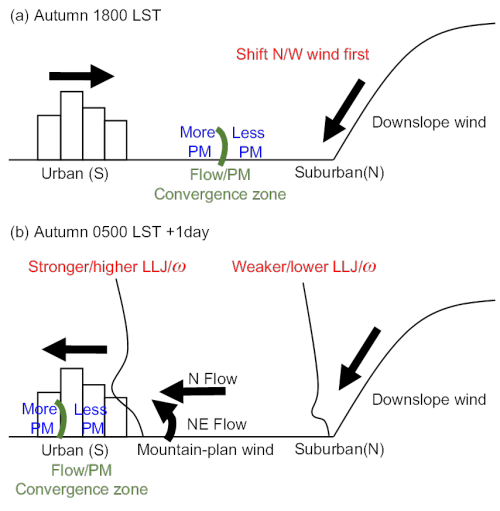The air quality in urban areas with complex topography is largely modulated by thermally driven circulations under weak synoptic forcing. In a new study published in Advances in Atmospheric Sciences, scientists from the Institute of Atmospheric Physics, Chinese Academy of Sciences, based on wind profiles and particulate matter (PM) observations in urban and suburban Beijing in autumn and winter, analyzed the characteristics of the nocturnal mountain breeze and their impact on PM distributions.

Schematic illustration of nocturnal mountain breezes and their impacts on PM over Beijing at both suburban and urban sites.
“We found that the intensity, height and depth of a weak LLJ [low-level jet] at the suburban site were lower than those at the urban site,” says Dr. Yong Chen, the first author of the study. “A weak nocturnal LLJ, which can reduce the PM concentration in northern urban Beijing, was an important factor in determining the 3D distribution of PM.”
Reference
Chen, Y., J. An, Y. Sun, X. Wang, Y. Qu, J. Zhang, Z. Wang, and J. Duan, 2018: Nocturnal low-level winds and their impacts on particulate matter over the Beijing area. Adv. Atmos. Sci., 35(12), https://doi.org/10.1007/s00376-018-8022-9 .
